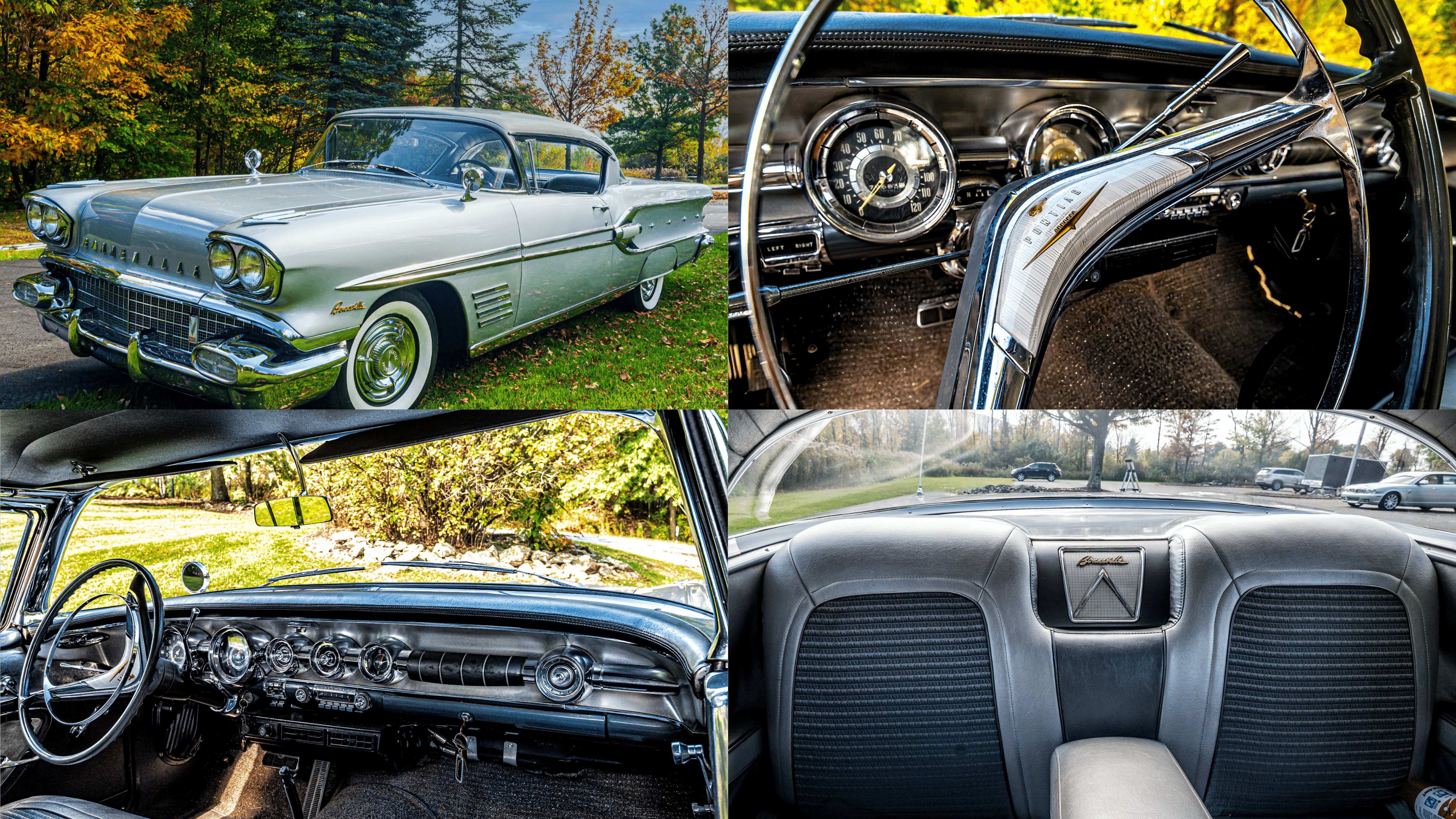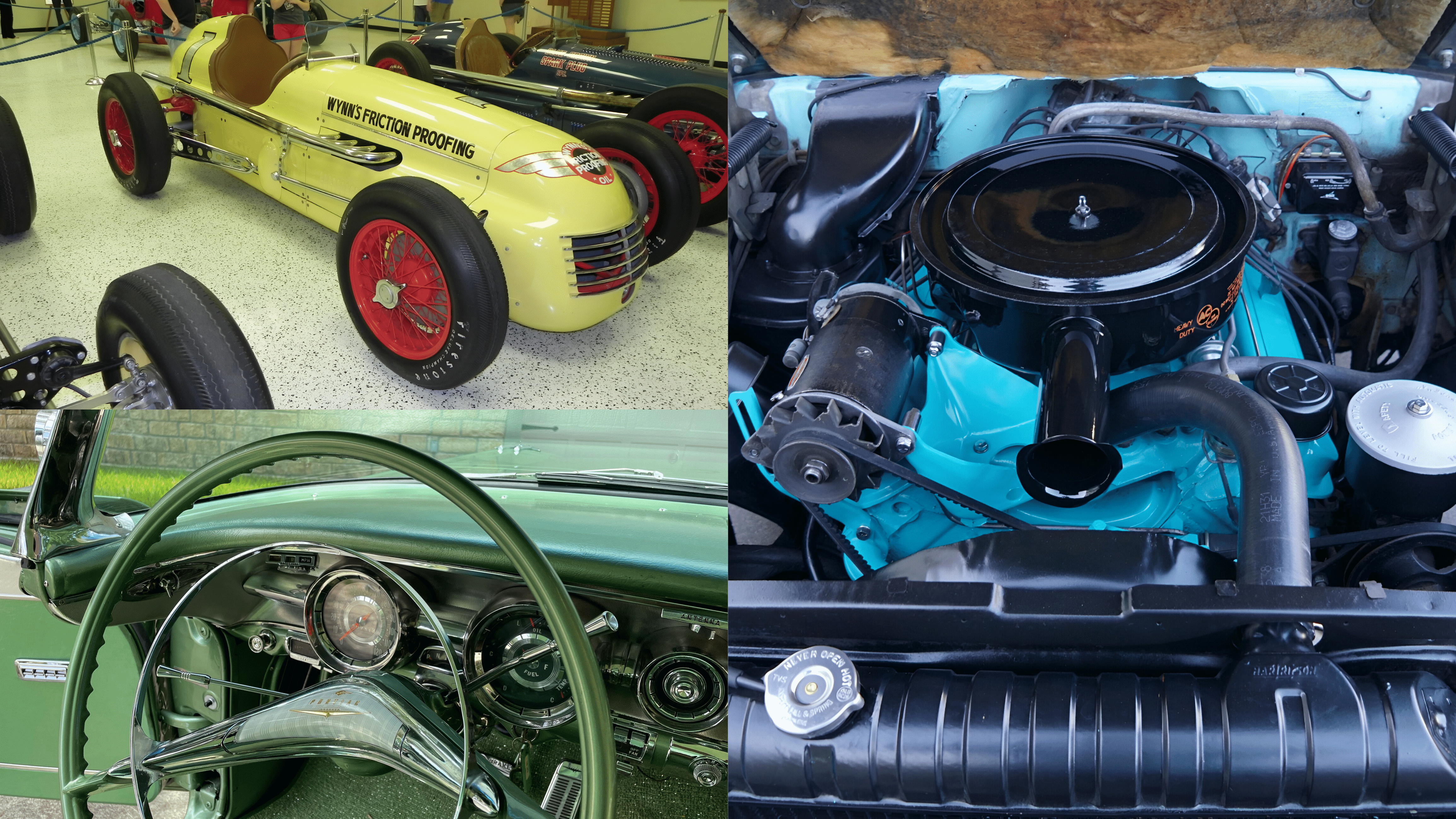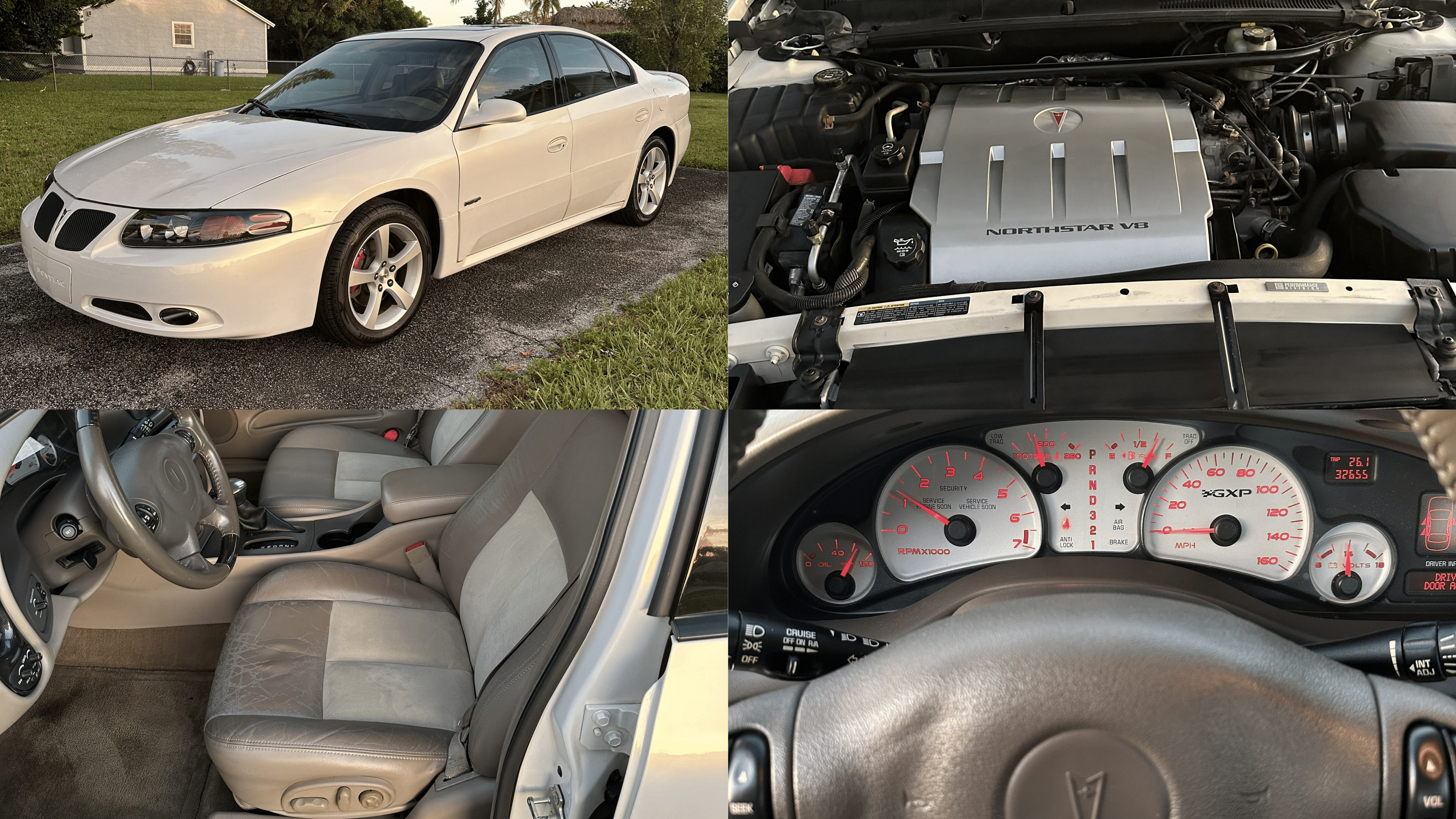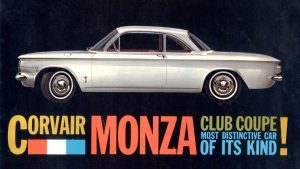
This introduction of the Bonneville name marked the beginning of a captivating tradition at Pontiac – using French words for their model names, adding a touch of sophistication to their branding. In 1957, the Bonneville made its debut as the top trim level of the Star Chief, a limited-production performance convertible. With only 630 units produced, it was a rare gem of the 1950s. The name Bonneville, inspired by the Salt Flats of Utah, evoked power and exclusivity. In 1958, the Bonneville transformed into its own model, featuring a sleek design with straight lines. It was Pontiac’s high-performance flagship, embodying the brand’s racing heritage. The Bonneville name endured, transitioning to the midsized LeMans and expanding into Canada, solidifying its legacy in the automotive world.
The 1958 1958 Pontiac Bonneville marked a turning point for Pontiac, becoming the brand’s flagship model and introducing numerous innovations that continue to influence car design to this day. This comprehensive article explores Bonneville’s rich legacy, tracing its design evolution through multiple generations and configurations, from luxurious coupes to NASCAR racers, as it endured as an icon of American automotive excellence.
Origins of the Bonneville Nameplate

The Bonneville nameplate made its debut in 1954, adorning a pair of stunning GM Motorama concept cars known as the “Bonneville Special,” which quickly became synonymous with Pontiac’s commitment to luxury and performance. In 1957, these vehicles, with their sleek lines and distinctive bubble tops, captured the imagination of automotive enthusiasts. What made the Bonneville Special even more intriguing was its shared appearance with the iconic Chevrolet Corvette. It was a clear statement of Pontiac’s intent to make a bold entrance into the world of high-performance vehicles.
1958 Pontiac Bonneville: A Standalone Brand

The year 1958 witnessed a pivotal moment in the history of Pontiac. The Pontiac 1958 Bonneville transitioned from a limited-production performance convertible introduced in 1957 to a distinct model line. Unlike its predecessors, the 1958 Bonneville was a standalone brand, separate from the 1957 Star Chief, even though it continued to ride on a similar chassis. This transition marked a profound shift in Pontiac’s strategy, elevating the Bonneville from a mere performance variant to a brand in its own right. The Star Chief in itself is so magnificent that even Magician Chris Angel could not stop himself from getting one.

The 1958 Pontiac Bonneville was not just about mechanical prowess; it was a true masterpiece in design. Its one-year-only body design was a work of art, earning it admirers among the average customer. The car featured an attractive exterior with flowing lines that exuded a sense of power and elegance. The interior was equally impressive, with a focus on comfort and style, setting a new standard for American automobiles. With its 2-door hardtop variant and a smaller 122″ wheelbase chassis, the Bonneville outshone the Star Chief as the new upscale offering. The 1958 Bonneville was notably the most expensive Pontiac model that year, with a $3,586 price tag for the convertible, achieved by transferring luxury features from standard equipment to optional choices. The model celebrated GM’s 50th anniversary and designer Harley Earl’s retirement with rocket-inspired decorations and space-age-themed taillights. It was designed as a performance model, offering multiple engine options and unique styling both inside and out, emphasizing its premier status in Pontiac’s 1958 lineup.
Evolution of the Bonneville

The 1968 Bonneville saw significant styling updates, with a heavily revised front fascia and new side-by-side headlights. While the side and rear styling remained largely unchanged from 1967, these updates gave the vehicle a fresh and modern look. The Pontiac Bonneville, spanning from 1957 to 2005, witnessed a remarkable evolution over its several generations. Beginning as a high-performance convertible, the first-generation Bonneville boasted a full-sized design with straight lines and distinct double-rounded headlights. The second generation introduced a squared-off appearance, while the third generation offered a variety of body styles, with the coupe gaining popularity. The fourth-generation Bonneville played a significant role in Pontiac’s sales success during the 1960s. The fifth generation adopted a more rounded and streamlined design, and the sixth generation featured a full-sized car in multiple configurations.
In the seventh generation, the Bonneville underwent downsizing, transitioning into a mid-size car from its traditional full-sized roots. The eighth generation saw a complete redesign, featuring a front-wheel drive. The ninth generation emphasized a rounded and aerodynamic design for improved fuel efficiency, while the tenth generation, introduced in 2000, marked the end of its production with approximately 12,000 units sold during its five-year run. Throughout its journey, the Bonneville transformed from a high-performance coupe/convertible to a luxury cruiser, consistently representing Pontiac’s flagship model. It evolved in size and features, encapsulating Pontiac’s brand identity over nearly five decades. Ultimately, it retained its prestigious status until the discontinuation of the Pontiac brand in 2010.
1958 Pontiac Bonneville Tri-Power
One of the most iconic versions of the 1958 Bonneville was the Tri-Power model. This variant, which served as the pace car for the 1958 Indianapolis 500, boasted a 370 CID Pontiac V8 engine. Initially limited to 255 horsepower with a standard four-barrel carburetor, it could be upgraded to 285 horsepower with the optional four-speed Super Hydramatic automatic. Enthusiasts and collectors alike continue to seek out the Tri-Power version, making it highly sought after even today.

For those seeking even more power, there was the “PK” package, elevating the horsepower to 315. In contrast, the fuel-injected version, although slightly less powerful, gained admiration among collectors. While only 400 models were equipped with the Rochester fuel injection system, it showcased Pontiac’s commitment to performance. The Tri-Power setup, employing three two-barrel Rochester carburetors, offered an affordable alternative, delivering smooth and efficient power distribution. It was a nod to the Bonneville’s performance and racing heritage, aligning with its status as Pontiac’s flagship model. This special edition not only exemplified Pontiac’s commitment to performance but also its ability to cater to the desires of car enthusiasts.
The Bonneville as Pontiac’s Flagship Model

The 1958 Pontiac Bonneville took on a significant role as a symbol of Pontiac’s focus on performance and racing heritage in the late 1950s and stood as the flagship model for the brand. Throughout the 1960s, it held the position of Pontiac’s senior model and significantly contributed to the brand’s rise to third place in sales from 1962 to 1970. Even today, the Bonneville is so much in demand that even Vin Diesel keeps one from the 1966 MY.

With its emphasis on luxurious trim, the Bonneville outshone other Pontiac models, including the Star Chiefs, Venturas, and Catalinas. Known for its full-size, large stature, it remained in production from 1957 until 2005, offering a range of body styles, including convertibles, coupes, sedans, and station wagons. In various shifts within the lineup, Bonneville consistently retained its status as the brand’s flagship model, reflecting Pontiac’s identity as a performance brand. With special performance packages designed for NASCAR racing, the Bonneville showcased Pontiac’s engineering and racing prowess. Its origin in the Salt Flats name evoked speed, power, and exclusivity, cementing its status as an iconic representation of Pontiac’s identity.
The Importance of the 1958 Pontiac Bonneville
The 58 Pontiac Bonneville wasn’t just a car; it was a symbol of innovation and performance. It played a pivotal role in establishing the Bonneville nameplate as a byword for luxury and power. This reputation continued to resonate with car enthusiasts and remained intertwined with Pontiac for many years to come. The 1958 Bonneville showcased a distinctive design characterized by chrome accents, dual chrome-encased headlights, and full-length side trim spears. Though not universally acclaimed in its time, this unique styling has since become an emblem of 1950s automotive aesthetics. Pontiac, facing a struggle to attract younger buyers and being linked to an older, more conservative clientele in the mid-1950s, underwent a transformation with the introduction of the Bonneville. Its performance and distinct design successfully altered the brand’s image, drawing a more discerning audience. The 58 Bonneville also left an indelible mark on American pop culture by boosting Pontiac’s sales and reinforcing its position as a premium choice, despite being the costliest Pontiac model of the year, priced at $3,481 for the sports coupe and $3,586 for the convertible.
Final Models and Legacy

The Bonneville nameplate continued to evolve over the years, with various models and updates, until its discontinuation in 2005. The Bonneville, once known as the Parisienne in Canada, and its platform companion, the Grand Ville, stood among the largest Pontiacs ever produced. From 1982 to 1986, the Bonneville briefly transitioned into a mid-size car, taking on the name Bonneville Model G, replacing its larger predecessor. The final Bonneville, crafted in 2005, was a full-size front-wheel-drive sedan available in three trims: SE, SLE, and SSEi, with the latter boasting a supercharged 3.8-liter V6 engine. Throughout its history, the Bonneville adapted to market trends and technological advancements, culminating in its last generation from 1992 to 2005, featuring a return to rear-wheel drive and V8 engines. Ultimately, its discontinuation marked Pontiac’s shift away from large sedans and toward a broader model range.
The 58 Bonneville’s legacy as a trailblazer cannot be overstated. It not only set the stage for the future of the Bonneville nameplate but also helped shape the trajectory of Pontiac’s history. Its impact on the automotive industry remains undeniable, and its influence can be seen in subsequent models and designs. It was a statement of innovation, luxury, and performance. Its unique design, innovative features, and remarkable performance capabilities made it a standout in Pontiac’s lineup. This car continues to be a favorite among car enthusiasts and collectors, a testament to the enduring legacy of the 1958 Pontiac Bonneville. In a world where automotive excellence is constantly evolving, the Pontiac Bonneville’s 50-year legacy shines as a beacon of enduring quality and a symbol of the indomitable spirit of innovation.





